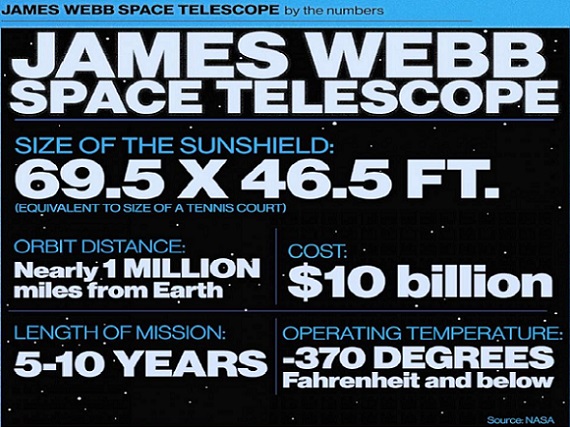On the day of Christmas, that is on 25th December 2021, James WebbSpace Telescope was launched by NASA. It is the biggest telescope in the history of mankind to be launched into space. The major task of this telescope is to conduct research on the origins of the Universe. It would be rushed into the cosmos and would orbit around 1.5 million miles from the Earth. It would be orbiting the Sun. Check the working of this telescope below and its functioning as well. But before that, take a look at the first image of James Webb telescope posted by NASA below.
Take Five: Captured in exquisite detail, @NASAWebb peered through the thick dust of Stephan’s Quintet, a galaxy cluster showing huge shockwaves and tidal tails. This is a front-row seat to galactic evolution: https://t.co/63zxpNDi4I #UnfoldTheUniverse pic.twitter.com/em9wSJPkEU
— NASA (@NASA) July 12, 2022
Some stars go out with a bang. In these images of the Southern Ring planetary nebula, @NASAWebb shows a dying star cloaked by dust and layers of light. Explore this star's final performance at https://t.co/63zxpNDi4I #UnfoldTheUniverse. pic.twitter.com/dfzrpvrewQ
— NASA (@NASA) July 12, 2022
Also Read|
Who Are Nostradamus & Baba Vanga? Check Future Predictions By Them That Came True
UPSC Mains 2021: Check UPSC Syllabus & How to Prepare for GS Paper I, II, III & IV
James Webb Telescope: Development-
The James Webb Telescope is jointly developed by NASA, European Space Agency and Canadian Space Agency. It is a $10 billion project that has left on its mission to know about the first stars to be formed in the Universe. It is the successor of the Hubble Space Telescope of NASA and is named after the famous Apollo Mission Architect of NASA James Webb. After its launch and reaching its orbit, James Webb Telescope would unpack itself from its folded configuration like a butterfly from its chrysalis.
What is the difference between NASA's Hubble & James Webb Telescopes?
James Webb Telescope: The Working-
The James Webb Telescope is an infrared telescope, It relies on infrared radiation to detect objects in space. It would be observing the celestial bodies such as stars, nebulae, and planets that are in a dying state due to being old. These planets, stars and nebulae are too cool to be observed in the visible light. This is why they are not visible to the human eye.
Infrared radiations are unable to pass through gas and dust which would thus appear opaque to the human eye. Hubble telescope on the other hand sees visible light and ultraviolet radiation and near-infrared radiation.
It's here–the deepest, sharpest infrared view of the universe to date: Webb's First Deep Field.
— NASA (@NASA) July 11, 2022
Previewed by @POTUS on July 11, it shows galaxies once invisible to us. The full set of @NASAWebb's first full-color images & data will be revealed July 12: https://t.co/63zxpNDi4I pic.twitter.com/zAr7YoFZ8C
Once in space, the telescope that is tightly folded inside the payload bay of an Ariane 5 rocket would separate from its launch vehicle. The telescope as soon as would cross the moon unfurl to travel its determined destination executing one of the most complex deployment sequences ever attempted. Take a look at the steps that would take for the telescope to begin its working below.

How Does James Webb Space Telescope Work? Step by Step Understanding
Step 1: Solar Array Deployment
Step 2: Sunshield Pallet Deployment- It would happen on Day 3 when two special pallets holding Webb’s essential sun shields would deploy.
Step 3: Tower Assembly- This would happen on Day 4 when the tower holding the instrumental package is lifted to the location of its operation.
Step 4: Momentum Flap Deployment- Sun would exert solar pressure on the large sun shield and the flap would help stabilize the telescope.
Step 5: Sunshine Membrane Cover Release- The special covers would release the tennis court-sized sun shields
Step6: Membrane tensioning- The sun shield and the mid booms would be deployed and the sun shield would be tensed to separate 5 layers.
Step 7: Secondary Mirror- This would happen on day 10 of deployment and a support structure for the smaller secondary mirror would be deployed.
Step 8: Primary Mirror Wings- This would happen on day 13 and the side panels of the main mirror would be extended.
Read|
Comments
All Comments (0)
Join the conversation